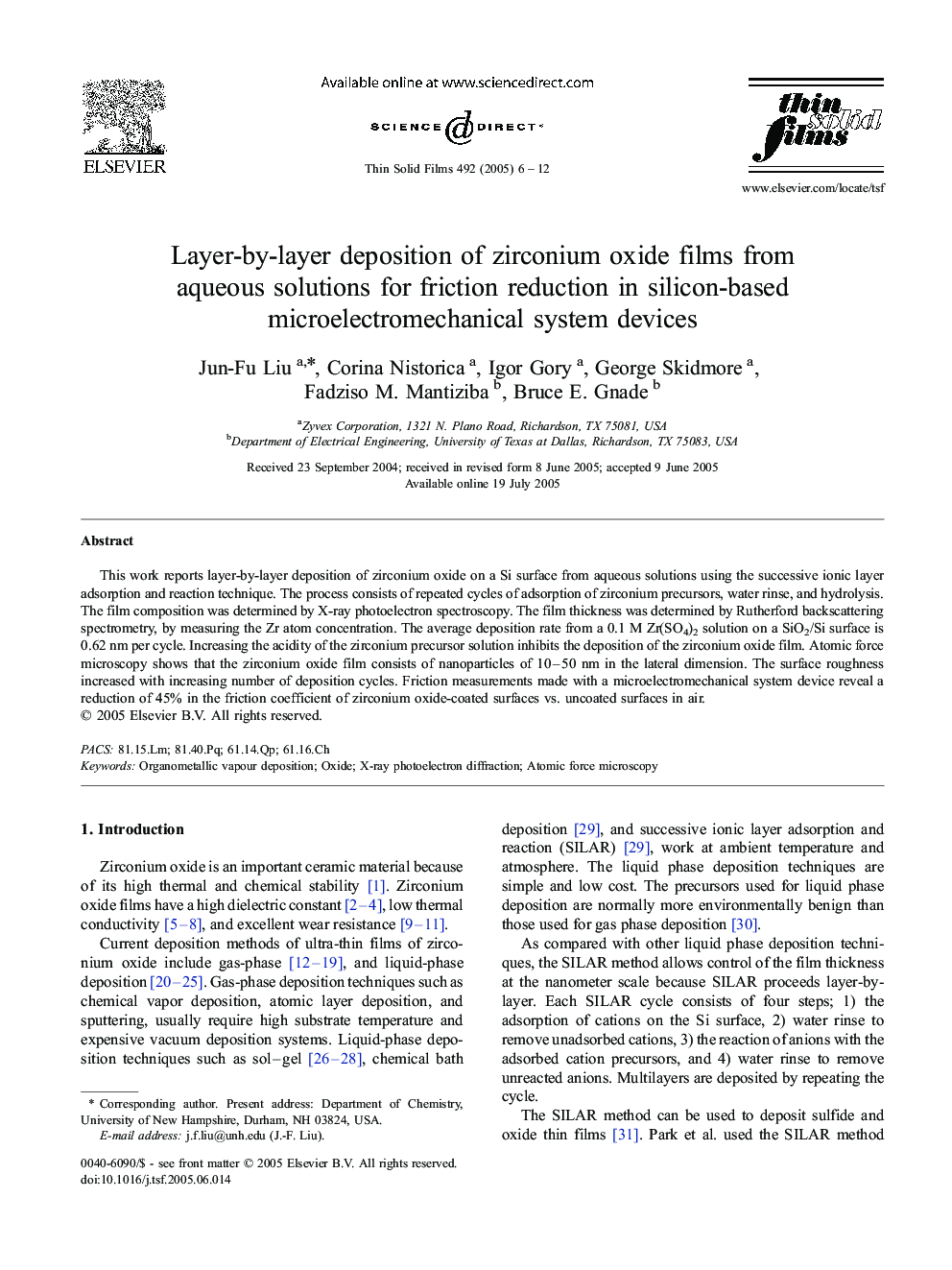| Article ID | Journal | Published Year | Pages | File Type |
|---|---|---|---|---|
| 9812108 | Thin Solid Films | 2005 | 7 Pages |
Abstract
This work reports layer-by-layer deposition of zirconium oxide on a Si surface from aqueous solutions using the successive ionic layer adsorption and reaction technique. The process consists of repeated cycles of adsorption of zirconium precursors, water rinse, and hydrolysis. The film composition was determined by X-ray photoelectron spectroscopy. The film thickness was determined by Rutherford backscattering spectrometry, by measuring the Zr atom concentration. The average deposition rate from a 0.1 M Zr(SO4)2 solution on a SiO2/Si surface is 0.62 nm per cycle. Increasing the acidity of the zirconium precursor solution inhibits the deposition of the zirconium oxide film. Atomic force microscopy shows that the zirconium oxide film consists of nanoparticles of 10-50 nm in the lateral dimension. The surface roughness increased with increasing number of deposition cycles. Friction measurements made with a microelectromechanical system device reveal a reduction of 45% in the friction coefficient of zirconium oxide-coated surfaces vs. uncoated surfaces in air.
Keywords
Related Topics
Physical Sciences and Engineering
Materials Science
Nanotechnology
Authors
Jun-Fu Liu, Corina Nistorica, Igor Gory, George Skidmore, Fadziso M. Mantiziba, Bruce E. Gnade,
